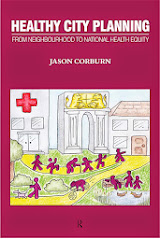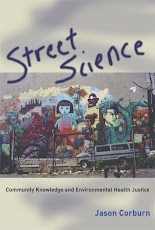As I've noted in this blog before, the Obama Administration has a number of iniatives that are aiming to promote sustainable development. The most visible program is called Sustainable Communities and is a partnership between 3 federal agencies: EPA, HUD and DOT - or environment, housing and transportation. The program is off to a commendable start: re-introducing regional planning into the lexicon of the federal government, re-connecting land use, housing and transportation decisions and, at seeming to place equity as a key priority. They iniative is up against years of federal, state and local actions that have contributed to unsustainable and most importantly for environmental health, inequitable development. Razing urban neighborhoods to build the interstate highway system, promoting white-flight to suburbs through mortgage insurance policies, concentrating poverty and racial residential segregation through federal housing programs, and siting multiple hazardous facilities, such as sewage treatment plants and power plants, in low-income, communities of color - - are just some examples of federal policies that this initiative must confront. An article from The American Prospect, The Reverse Commute, reviews this program and the myriad of challenges it faces - - particularly its tendency to over-rely on New Urbanist design principles to move the nation toward sustainable development. Written by a planner and someone with experience of social justice issues in cities, this is one of the better articles on the program but fails to engage enough with the issues of bureaucratic fragmentation and issue segmentation, home-rule, and structural racism that continue to plague our planning institutions.
Here is a recent press release detailing the federal funds behind this program and their attention to livability and human health.







